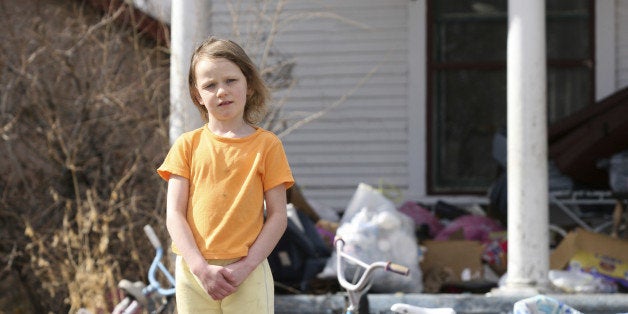
Chloe laughed from her belly. A popsicle left its mark on a yellow sunflower dress, and pigtails of dirty blonde curls dusted her cheeks as she walked. She had a gap between her front teeth, and when she smiled, her dark green eyes disappeared in a squint. She told me several times, "I'm going be a princess!" "Which one?" I'd ask. She'd throw her favorite blanket on her head and point to the smiling Cinderella.
Chloe's kindergarten teacher saw bruises at recess earlier that day. Suspecting abuse, she brought the 5-year-old to a medical clinic after school. We found swollen lymph nodes in her armpits and groin and called the child's mother. A bone test the next day confirmed acute lymphoblastic leukemia, childhood's most common cancer. Treatment began.
Until the 1960s, nearly every child with Chloe's type of cancer died within one year of diagnosis. But little by little, research advanced. Eventually, scientists found vincristine. The U.S. Food and Drug Administration approved the miracle drug in 1963, and today, therapies with vincristine cure over 90 percent of kids with leukemia.
But when Chloe started vincristine, her dad was in jail. Her mom, between jobs and with a newborn boy, rinsed the baby's paper diapers in the sink. "They're just too expensive to throw away," she said.
Chloe's mother kept her inside as her immune system recovered from chemotherapy. But Chloe wasn't upset. She was used to staying indoors. Gangs governed Chloe's hometown and her mom forbid playing outside for fear of stray bullets.
Two months of treatment went by, and Chloe's mom, desperate for work, focused on finding a job. She sent Chloe to live with family near the southern United States border.
There, on the floor of a one-bedroom apartment with two other families of four, Chloe slept on her Cinderella blanket. Air conditioners weren't allowed that summer, and the family rarely had enough to eat. And there were cockroaches. "Lots of them," the social worker told me. Eventually, Chloe got a simple infection, one she likely could have avoided in better living conditions. She never made it to first grade.
I am one of America's newest doctors, an intern pediatrician at Harvard. My colleagues and I fix asthma attacks, holes in the heart and gut bleeding. We transplant kidneys and take tumors out of the brain.
And we can even cure kids from childhood's most common cancer -- unless they're poor. The vincristine miracle failed Chloe because her family, like 50 million other people in our country, lives in poverty.
Recently, the ALS ice bucket challenge repeated history: the United States is capable of incredible feats when its people stand up (and this time, dump water on themselves) for those in need. More than 100 million dollars were raised for a disease affecting 30,000 Americans.
I am all for this cause. But we can't stop with an icy shower, a breakthrough scientific discovery, or even the first person cured of ALS. We can't stop with medical cures for any bodily disease. Because if we do, then what about Chloe?
Chloe died of a systemic disease, not of her body but of her country. Right now in Detroit, six of every ten kids are poor. In Fresno, five in ten. In Miami, 44 percent. The list goes on. Let us turn our funding, research, and social media to America's most prevalent disease.